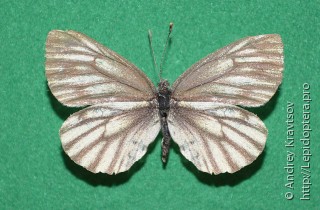Photo #36456: Pieris bryoniae
Female

Click image to enlarge
Base gallery. Upperside. Pinned specimen.
Photo: Andrey Kravtsov. Image without retouching at the website. Identified by: Alexander Belousov
Date and time, location shooting/catching: 2014-07-25 00:00:00, Almaty,Kazakhstan, Almarassan gorge
Comments on this image
Your comment
Please, create an account or log in to add comments.
Other photos Pieris bryoniae






All large size images of Pieris bryoniae on one page
Please, create an account or log in to upload your photo
News
- 31.12.2024: Если нужно загрузить на сайт много фотографий
- 10.12.2024: Новое поле в «Поиске энтомологов»
- 05.12.2024: Insecta.pro maps: filter by taxon
New photos (27.02.2025)
Fresh from the community
- 9:16, V. Kolesnikov: Brenthis ino или Brenthis hecate?...
- 8:13, N. Grebennikov: род Elachista (Treitschke, 1833)....
- 20:30, P. Khramov: Отправляю пока в неточные....
Popular insects
Recommended blog topics
- ICZN Election of Commissioners
- Entomologist? What kind of job is it?
- Butterflies and music: the “Licedeyi” mime theatre... and a Happy New Year!












